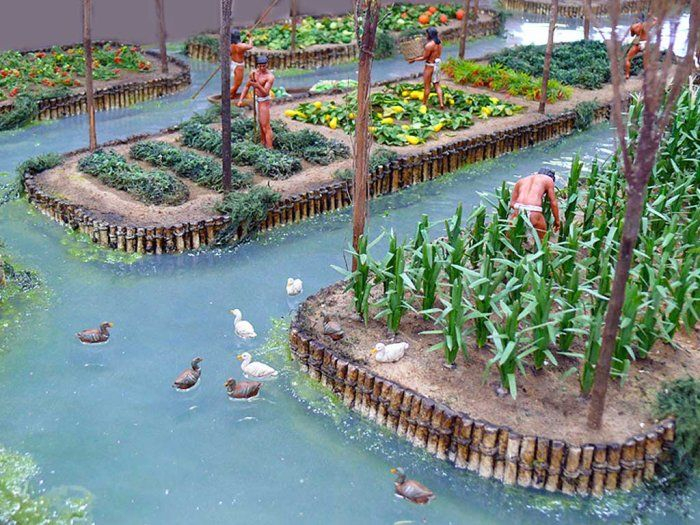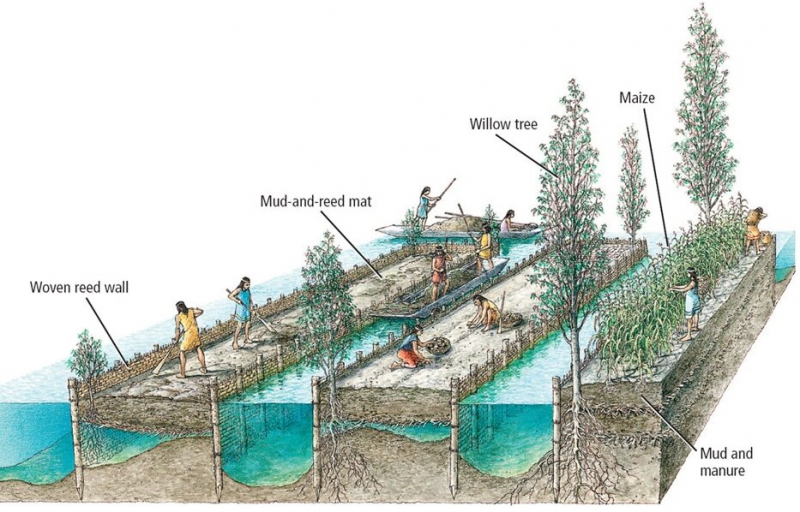They Perfected The Technique Of Creating Artificial Islands Called Chinampas
Chinampa is a Mesoamerican farming technique that uses small, rectangular plots of fertile arable land to cultivate crops on the shallow lake beds of the Valley of Mexico. They are constructed for agricultural reasons on wetlands of a lake or freshwater swamp, and their proportions guarantee optimal moisture retention. This is one of the major achievements of the ancient Aztec civilization.
Chinampas, often known as floating gardens, were more correctly described as artificial islands. The Aztecs perfected the method of building chinampas, which allowed them to expand their farming and living areas. Staking out the shallow lake bottom and stringing the stakes together to make fencing formed a chinampa. The fenced-in area was subsequently coated with mud, lake debris, and rotting plants, gradually elevating it above the lake's surface. To sustain the artificially constructed island, trees were frequently planted along the perimeter. Tenochtitlan's chinampas vary in size from 90 m 5 m (300 ft 20 ft) to 90 m 10 m (300 ft 30 ft). The lake supplied the chinampas with moisture packed with decomposing organic wastes, which watered and fertilized the soil of the artificial island, allowing for an intensive and extremely productive style of agriculture. The chinampas could produce up to seven crops per year, providing enough food for the Aztec towns' growing populations.












